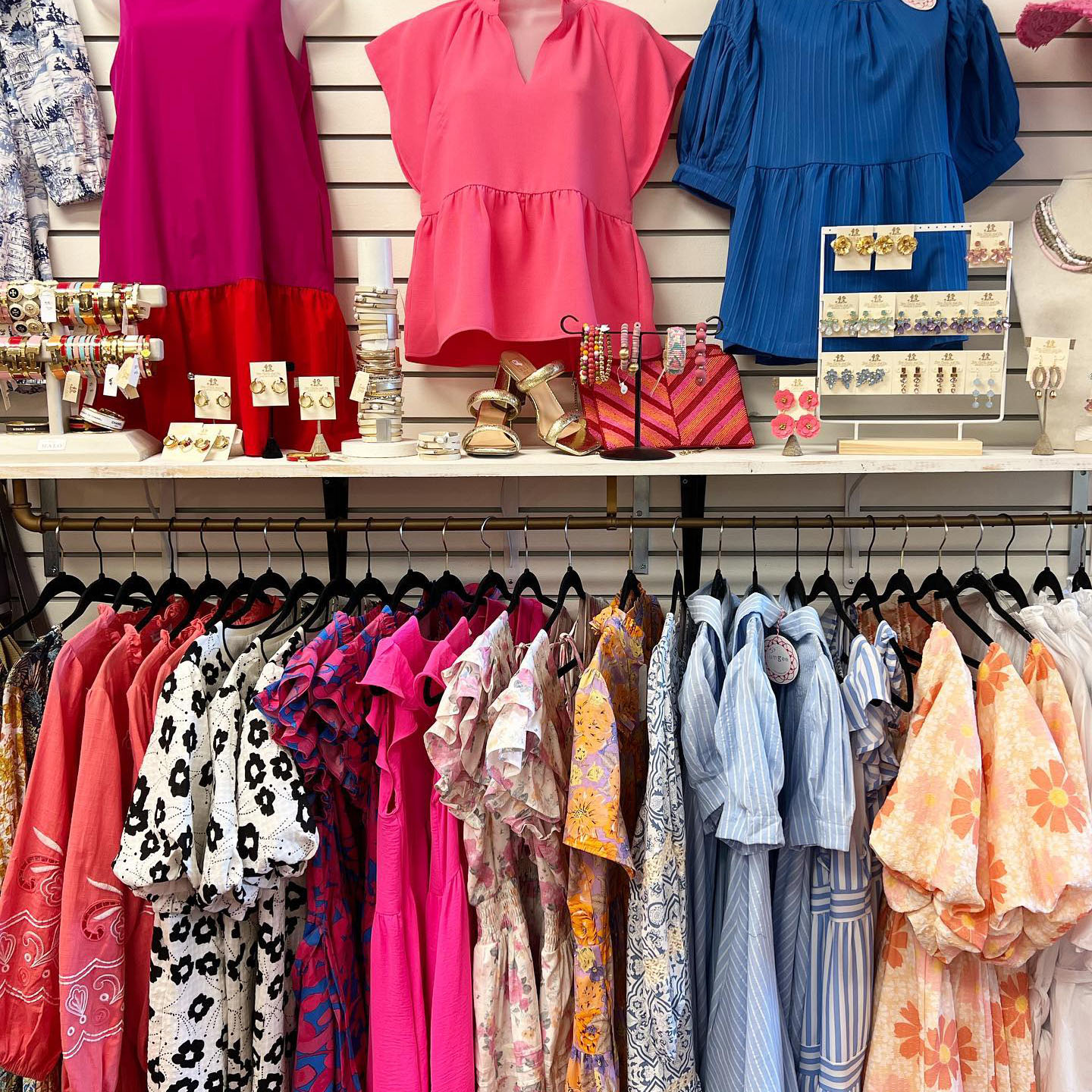Lasting Fashion: Just How Eco-Friendly Apparel Is Shaping the Future of Style
As the garment industry faces enhancing examination over its ecological impact, the surge of lasting style supplies an appealing alternative that lines up design with eco-friendly responsibility. Utilizing innovative products such as recycled fibers and plant-based materials, along with innovative methods like electronic and 3D printing, developers are redefining what it means to be trendy in the modern age. Concurrently, the expanding popularity of upcycling and second hand culture is fostering a shift in the direction of a circular economic climate. Exactly how does this activity absolutely influence the future trajectory of fashion, and what challenges lie in advance in its widespread adoption?
Innovative Sustainable Materials
As the fashion sector grapples with its ecological impact, ingenious lasting products have actually emerged as a crucial service for minimizing eco-friendly impacts. These products not just minimize reliance on fossil gas however additionally reduce unsafe pesticide use and water consumption.
Along with plant-based materials, innovations in biofabrication have actually caused the development of lab-grown fabrics. Mycelium leather, derived from mushroom roots, presents a versatile and eco-friendly choice to pet natural leather. Its manufacturing results in substantially lower carbon exhausts and water usage, making it a much more lasting choice for stylist seeking to align with eco-friendly methods.
Recycled materials are also getting grip, with polyester made from recycled plastic bottles standing for a substantial breakthrough. This advancement not just diverts plastic waste from seas and land fills however additionally lowers energy usage compared to creating virgin polyester. With each other, these products underscore the potential for a more lasting garment industry, leading the means for ecologically aware style and manufacturing.
Eco-Conscious Production
Structure on the technologies in sustainable products, the style industry is likewise re-evaluating its manufacturing processes to additionally minimize ecological impact. Trick techniques consist of lessening water consumption, lowering carbon discharges, and eliminating dangerous chemicals.
Another crucial element is the decrease of poisonous chemicals traditionally utilized in coloring and completing textiles. Eco-conscious producers are moving towards plant-based dyes and waterless dyeing technologies, which not only guard local ecological communities yet also boost employee safety and security. Technologies like digital printing lower material waste and power intake, supplying a cleaner option to traditional techniques.
With the improvement of blockchain modern technology, firms can now provide comprehensive insights right into their supply chains, ensuring honest and environmentally friendly methods at each action. As the demand for eco-conscious products grows, suppliers are compelled to innovate, making certain that the future of fashion is both lasting and trendy.
The Surge of Upcycling
Upcycling, a transformative practice in lasting fashion, entails creatively repurposing discarded materials right into brand-new, high-quality items. This ingenious method not only decreases waste but also lessens the need for basic materials, thus lessening the ecological effect of clothing production. By reimagining and rebuilding existing things, designers and fashion brands have the ability to instill originality right into their collections while advertising environmental responsibility.

Furthermore, the upcycling motion has actually equipped independent designers and small organizations, that frequently lead in advancement due to their agility and creative thinking. By taking advantage of the abundant availability of extra products, these entities add to a round economic climate, showing that style can be both lasting and trendy. With upcycling, the industry takes substantial strides towards an extra responsible and conscious future.
Thrift Culture's Effect
The blossoming second hand culture substantially improves the landscape of sustainable fashion, emphasizing the importance of mindful site web usage. This cultural change urges consumers to accept pre-owned clothes, therefore reducing the need for brand-new garment production and minimizing ecological effect. Thrift purchasing not just expands the lifecycle of clothes yet likewise reduces the carbon impact related to manufacturing, transferring, and disposing of clothing.
A crucial element of thrift society is its democratization of style. By offering a wide selection of styles from numerous periods at cost effective costs, second hand shops make style easily accessible to a broader target market. This availability promotes a feeling of originality and creative thinking, as customers mix and suit unique pieces to curate customized wardrobes without adding to the rapid fashion cycle.
Furthermore, second hand culture advertises circularity in fashion, aligning with the principles of a round economy. As even more consumers and designers accept thrift culture, the style sector is obliged to adjust, integrating lasting practices to meet the expanding demand for eco-conscious alternatives.

Future Trends in Style
Style's evolution is progressively shaped by sustainability-driven efforts and technological innovations. One prominent fad is the surge of electronic fashion, where digital garments can be worn in enhanced fact settings, considerably lowering fabric waste.
Furthermore, the integration of blockchain technology uses brand-new opportunities in transparency and traceability, permitting customers to verify the sustainability qualifications of their clothing. boutique fashion. This makes certain accountability in supply chains and advertises moral sourcing practices. 3D printing is yet one more innovation that guarantees to reinvent producing procedures by allowing on-demand production, thereby lowering excess inventory and waste
As these innovations mature, they are positioned to transform the style landscape, merging design with sustainability. The future of style, therefore, exists in a smooth blend of technology, advancement, and environmental obligation.
Final Thought
The makeover of the apparel industry through lasting methods suggests a crucial shift in the direction of ecological liability. The assimilation of ingenious materials, eco-conscious production techniques, and the embracement of upcycling and second hand society emphasizes a dedication to decreasing environmental footprints. As these methods gain momentum, they have a peek at this website redefine the industry's story by focusing on lasting and ethical choices. This evolution not just aligns fashion with ecological sustainability however additionally sets a precedent for future trends focused on obligation and technology.
As the fashion market deals with raising scrutiny over its environmental influence, the increase of sustainable fashion provides an encouraging choice that aligns style with environmental duty.As the style industry grapples with its environmental Web Site effect, cutting-edge sustainable materials have emerged as a critical solution for lowering environmental footprints. With each other, these products highlight the possibility for a more lasting fashion market, paving the method for ecologically conscious design and manufacturing.
Building on the developments in lasting materials, the fashion industry is also re-evaluating its production processes to even more decrease environmental effect. boutique fashion.Upcycling, a transformative practice in lasting style, involves artistically repurposing discarded products into new, high-grade items